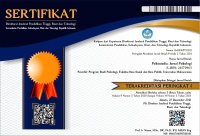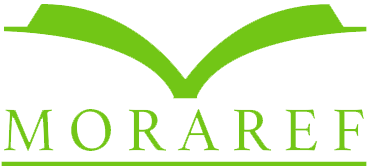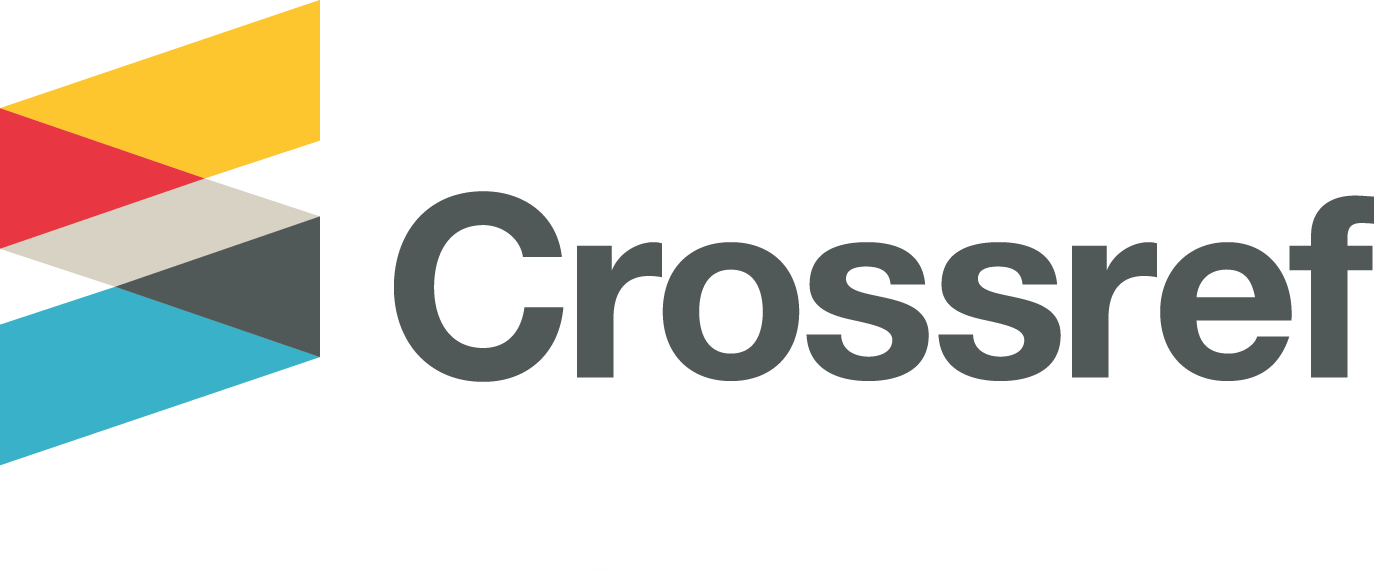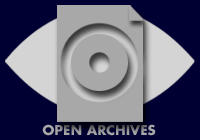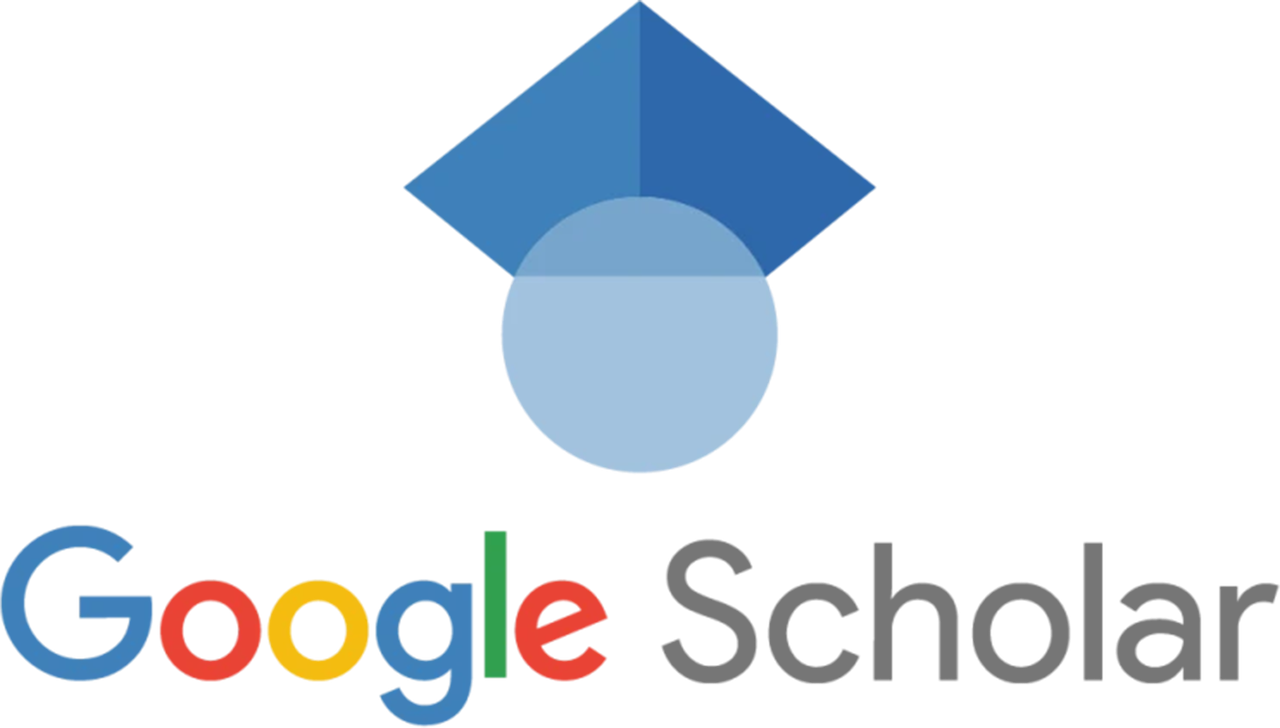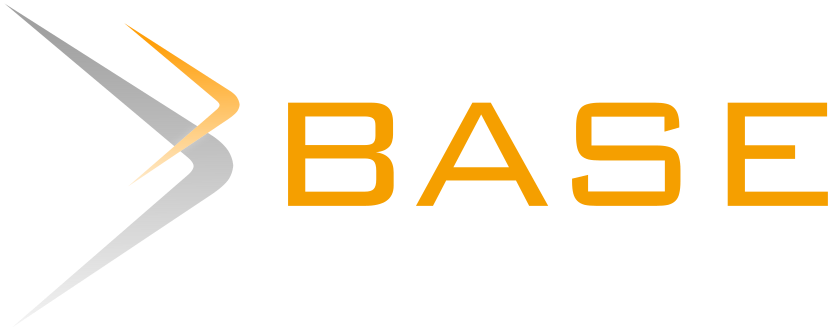Human Resource Development through Knowledge Management Towards Digital Transformation System
Abstract
This ponder points to get it how Computerized Change frameworks can be actualized within the setting of Human Asset Advancement and Information Administration. It incorporates the consideration of the innovations and apparatuses utilized in Advanced Change. Another objective is to investigate how Information Administration and Advanced Transformation can work together to attain organizational objectives. This investigation is based on the Precise Writing Audit (SLR). Through this strategy, analysts collect a few multidisciplinary distributions from cited and high-device multidisciplinary journals. Therefore, for our consider, taking these critical components into consideration, we see SLR as a reasonable strategy that combines these components whereas avoiding analyst predisposition. Based on the comes about of the writing consider gotten, Computerized Transformation has empowered organizations to utilize innovation in overseeing information, which in turn, makes a difference within the advancement of Human Assets. Innovation has encouraged the collection, capacity, and sharing of knowledge, which is a vital perspective of Information Administration. Be that as it may, considers moreover appear that there are challenges within the application of innovation in Information Administration. A few of these challenges may incorporate resistance to alter, need of understanding of unused innovations, and information security issues. Hence, it is vital for organizations to address these challenges to guarantee effective usage of Computerized Change and Information Administration. By and large, the comes about appear that Advanced Change and Knowledge Administration are key variables in Human Asset hones and organizational learning. In any case, it is vital for organizations to address challenges which will emerge amid this handle to guarantee their victory.
Keywords
Full Text:
FULL TEXTReferences
Abdul Rahman, A., & Selwyn, J. (2019). A conceptual model for effectiveness of knowledge management systems. International Journal of Recent Technology and Engineering, 8(2). https://doi.org/10.35940/ijrte.B3371.078219
Ahmadi, A., Abzari, M., Isfahani, A. N., & Safari, A. (2018). The impacts of learning strategies and creativity on knowledge workers’ innovation in Iranian knowledge-based firms. International Journal of Business Innovation and Research, 17(3), 378–393.
Al-Gharibeh, K. M. (2011). The knowledge enablers of knowledge transfer: an empirical study in telecommunications companies. IBIMA Business Review.
Ali, A., Nor, R. N. H., Abdullah, R., & Murad, M. A. A. (2016). Developing conceptual governance model for collaborative knowledge management system in public sector organisations. Journal of Information and Communication Technology, 15(2). https://doi.org/10.32890/jict.15.2.2016.6702
Alvarenga, A., Matos, F., Godina, R., & CO Matias, J. (2020). Digital transformation and knowledge management in the public sector. Sustainability, 12(14), 5824.
Anderson, M. (2015). Technology device ownership: 2015.
Aujirapongpan, S., Vadhanasindhu, P., Chandrachai, A., & Cooparat, P. (2010). Indicators of knowledge management capability for KM effectiveness. Vine, 40(2), 183–203.
Azmi, A., & Welly, J. (2021). “Evaluating the Effectiveness of Performance Management Systems to Move Towards Become a Digital Company”: Case Study PT. XYZ (SOE Company in Indonesia). European Journal of Business and Management Research, 6(2). https://doi.org/10.24018/ejbmr.2021.6.2.769
Bamel, N., Pereira, V., Bamel, U., & Cappiello, G. (2021). Knowledge management within a strategic alliances context: past, present and future. Journal of Knowledge Management, 25(7), 1782–1810.
Bellantuono, N., Nuzzi, A., Pontrandolfo, P., & Scozzi, B. (2021). Digital transformation models for the i4.0 transition: Lessons from the change management literature. Sustainability (Switzerland), 13(23). https://doi.org/10.3390/su132312941
Bergerson, B. P. (2003). Essential of Knowledge management. New Jersey. Canada: John Wuley & Sons Inc.
Bitkowska, A., Detyna, B., & Detyna, J. (2022). Importance of IT systems in integration of knowledge and business process management. Issues in Information Systems, 23(1). https://doi.org/10.48009/1_iis_2022_109
Bratianu, C. (2010). A critical analysis of Nonaka’s model of knowledge dynamics. Proceedings of the 2nd European Conference on Intellectual Capital, ISCTE Lisbon University Institute, Lisbon, Portugal, 29(30), 115–120.
Budihardjo, A. (2011). Organisasi: Menuju pencapaian kinerja optimum. Prasetiya Mulya.
Buntoro, G. A., Astuti, I. P., Widhianingrum, W., Arifin, R., Winangun, K., & Selamat, A. (2023). Knowledge Management System for Handcrafted Reog Ponorogo Products. Electronic Journal of Knowledge Management, 21(2). https://doi.org/10.34190/EJKM.21.2.3026
Castagna, F., Centobelli, P., Cerchione, R., Esposito, E., Oropallo, E., & Passaro, R. (2020). Customer knowledge management in SMEs facing digital transformation. Sustainability, 12(9), 3899.
Centobelli, P., Cerchione, R., & Esposito, E. (2019). Efficiency and effectiveness of knowledge management systems in SMEs. Production Planning and Control, 30(9). https://doi.org/10.1080/09537287.2019.1582818
Centobelli, P., Cerchione, R., Esposito, E., & Passaro, R. (2021). Determinants of the transition towards circular economy in SMEs: A sustainable supply chain management perspective. International Journal of Production Economics, 242, 108297.
Choi, H. J., Ahn, J. C., Jung, S. H., & Kim, J. H. (2020). Communities of practice and knowledge management systems: effects on knowledge management activities and innovation performance. Knowledge Management Research and Practice, 18(1). https://doi.org/10.1080/14778238.2019.1598578
CHRISPIM, M. C. (2021). Resource recovery from wastewater treatment: challenges, opportunities and guidance for planning and implementation. Frontiers in Neuroscience, 14(1).
D’Adamo, I., & Rosa, P. (2019). A structured literature review on obsolete electric vehicles management practices. Sustainability, 11(23), 6876.
Dalkir, K. (2005). Knowledge management models. Knowledge Management in Theory and Practice, 47–74.
Davenport, T. H. (2005). Thinking for a living: how to get better performances and results from knowledge workers. Harvard Business Press.
Davidson, C., & Voss, P. (2003). Knowledge Management, AnIntroduction to creating competitivee adventage. NewDelhi. Intellectua Capital Vision Book.
Dei, D. G. J. (2021). Perspectives Of Knowledge Management Systems Implementation. Library Philosophy and Practice, 2021.
Dixon, N. M. (1992). Organizational learning: A review of the literature with implications for HRD professionals. Human Resource Development Quarterly, 3(1), 29–49.
Dorel Badea, Nicoleta Mihaiu, D. I. (2015). ANALYSIS OF HUMAN RESOURCE MANAGEMENT IN THE MILITARY ORGANIZATION FROM THE PERSPECTIVE OF PETER DRUCKER’S VISION DorelBADEA DumitruIANCU. Management and Economics, 78(2).
Endrejat, P. C., Klonek, F. E., Müller-Frommeyer, L. C., & Kauffeld, S. (2021). Turning change resistance into readiness: How change agents’ communication shapes recipient reactions. European Management Journal, 39(5). https://doi.org/10.1016/j.emj.2020.11.004
Fan, D., Breslin, D., Callahan, J. L., & Iszatt‐White, M. (2022). Advancing literature review methodology through rigour, generativity, scope and transparency. International Journal of Management Reviews, 24(2), 171–180.
Fang, S., Liu, Q., Zhang, F., Chen, N., & Li, X. (2023). Application of Internet of Things and Blockchain in Information Security and Privacy Protection of Global Organizations. Journal of Organizational and End User Computing, 35(3). https://doi.org/10.4018/JOEUC.323192
Fong, P. S. W., Men, C., Luo, J., & Jia, R. (2018). Knowledge hiding and team creativity: the contingent role of task interdependence. Management Decision, 56(2), 329–343.
Gallupe, B. (2001). Knowledge management systems: surveying the landscape. International Journal of Management Reviews, 3(1), 61–77.
Gomez, C., & Sanchez, J. I. (2005). Human resource control in MNCs: a study of the factors influencing the use of formal and informal control mechanisms. The International Journal of Human Resource Management, 16(10), 1847–1861.
Gorelick, C., & Tantawy‐Monsou, B. (2005). For performance through learning, knowledge management is the critical practice. The Learning Organization, 12(2), 125–139.
Grafton, J., Lillis, A. M., & Mahama, H. (2011). Mixed methods research in accounting. Qualitative Research in Accounting & Management, 8(1), 5–21.
Gupta, A. K., & Singhal, A. (1993). Managing human resources for innovation and creativity. Research-Technology Management, 36(3), 41–48.
Halawi, L. A., McCarthy, R. V., & Aronson, J. E. (2007). An empirical investigation of knowledge management systems’ success. Journal of Computer Information Systems, 48(2).
Huber, G. P. (1991). Organizational learning: The contributing processes and the literatures. Organization Science, 2(1), 88–115.
Hult, G. T. M. (2003). An integration of thoughts on knowledge management. Decision Sciences, 34(2), 189.
Imran, M. K., Rehman, C. A., Aslam, U., & Bilal, A. R. (2016). What’s organization knowledge management strategy for successful change implementation? Journal of Organizational Change Management, 29(7). https://doi.org/10.1108/JOCM-07-2015-0130
Jackson, S. E., Schuler, R. S., & Jiang, K. (2014). An aspirational framework for strategic human resource management. Academy of Management Annals, 8(1), 1–56.
Jakubik, M. (2020). Enhancing human capital beyond university boundaries. Higher Education, Skills and Work-Based Learning, 10(2). https://doi.org/10.1108/HESWBL-06-2019-0074
Jarrahi, M. H., Askay, D., Eshraghi, A., & Smith, P. (2023). Artificial intelligence and knowledge management: A partnership between human and AI. Business Horizons, 66(1). https://doi.org/10.1016/j.bushor.2022.03.002
Khan, S., Prasad, B. V. N., Selvi, S., Rani, U., Srivastava, A. K., & Gautam, D. K. (2015). Document management system: An explicit knowledge management system. 2015 International Conference on Computing for Sustainable Global Development, INDIACom 2015.
Lam, W., & Chua, A. (2005). Knowledge management project abandonment: an exploratory examination of root causes. Communications of the Association for Information Systems, 16(1), 35.
Lartey, F. M. (2021). Impact of career Planning, employee autonomy, and manager recognition on employee engagement. Journal of Human Resource and Sustainability Studies, 9(02), 135.
Lin, C., & Kuo, T. (2007). The mediate effect of learning and knowledge on organizational performance. Industrial Management & Data Systems, 107(7), 1066–1083.
Liu, Z. Q., Dorozhkin, E. M., Davydova, N. N., & Sadovnikova, N. O. (2020). Effectiveness of the partial implementation of a cloud-based knowledge management system. International Journal of Emerging Technologies in Learning, 15(13). https://doi.org/10.3991/ijet.v15i13.14919
Maltir, I., Park, S.-T., Lee, S.-W., Ko, M.-H., Colli, M., Madsen, O., Berger, U., Møller, C., Wæhrens, B. V, Bockholt, M., Zezulka, F., Marcon, P., Bradac, Z., Arm, J., Benesl, T., Vesely, I., Franciosi, C., Iung, B., Miranda, S., … Schneider, T. (2018). Opportunities and challenges of Industry 4.0 for the steel industry [Opportunità e sfide di industria 4.0 per l’industria siderurgica]. IFAC-PapersOnLine, 51(4).
Massaro, M., Dumay, J., & Guthrie, J. (2016). On the shoulders of giants: undertaking a structured literature review in accounting. Accounting, Auditing & Accountability Journal, 29(5), 767–801.
Montoya-Quintero, D. M., Bermudez-Ríos, L. F., & Cogollo-Flórez, J. M. (2022). Model for Integrating Knowledge Management System and Quality Management System in Industry 4.0. Quality - Access to Success, 23(189). https://doi.org/10.47750/QAS/23.189.03
Natek, S., & Lesjak, D. (2021). Knowledge management systems and tacit knowledge. International Journal of Innovation and Learning, 29(2). https://doi.org/10.1504/IJIL.2021.112994
Nemati, H. R., Steiger, D. M., Iyer, L. S., & Herschel, R. T. (2002). Knowledge warehouse: an architectural integration of knowledge management, decision support, artificial intelligence and data warehousing. Decision Support Systems, 33(2), 143–161.
Nezafati, N., Razaghi, S., Moradi, H., Shokouhyar, S., & Jafari, S. (2023). Promoting knowledge sharing performance in a knowledge management system: do knowledge workers’ behavior patterns matter? VINE Journal of Information and Knowledge Management Systems, 53(4). https://doi.org/10.1108/VJIKMS-11-2020-0202
Nohuddin, P. N. E., & Zainol, Z. (2020). Discovering explicit knowledge using text mining techniques for peacekeeping documents. International Journal of Business Information Systems, 35(2), 152–166.
Nonaka, I., & Takeuchi, H. (2001). Organizational knowledge creation. Creative Management, 64.
Nootjarat, R., Chantatub, W., & Chongstitvatana, P. (2012). Towards an Understanding of how Information Technology Enables Innovation–the Innovators’ Perceptions. Distances, 6(12).
Nova, N. A., González, R. A., Beltrán, L. C., & Nieto, C. E. (2023). A knowledge management system for sharing knowledge about cultural heritage projects. Journal of Cultural Heritage, 63. https://doi.org/10.1016/j.culher.2023.07.013
Oakleaf, M. J. (2010). The value of academic libraries: A comprehensive research review and report.
Oelke, N. D., Suter, E., da Silva Lima, M. A. D., & Van Vliet-Brown, C. (2015). Indicators and measurement tools for health system integration: A knowledge synthesis protocol. Systematic Reviews, 4(1). https://doi.org/10.1186/s13643-015-0090-7
Park, C., Vertinsky, I., & Becerra, M. (2015). Transfers of tacit vs. explicit knowledge and performance in international joint ventures: The role of age. International Business Review, 24(1), 89–101.
Petrides, L. A., & Ngyuen, L. (2006). Knowledge management trends: challenges and opportunities for educational institutions. Knowledge Management and Higher Education: A Critical Analysis, 21–33.
Ramakrishnan, K., & Yasin, N. M. (2012). Employment issues among Malaysian information and communication technology (ICT) graduates: A case study. African Journal of Business Management, 6(16), 5615–5621.
Razaghi, M. E., Moosavi, S. J., & Safania, A. M. (2013). Successful knowledge management establishment in sport organizations with an emphasis on Iranian localization. International Journal of Sport Studies, 3(1), 30–37.
Rosa, P., Sassanelli, C., Urbinati, A., Chiaroni, D., & Terzi, S. (2020). Assessing relations between Circular Economy and Industry 4.0: a systematic literature review. International Journal of Production Research, 58(6), 1662–1687.
Saddam, S. Z., & Jaafar, M. N. (2021). Modified value-added intellectual capital (MVAIC): contemporary improved measurement model for intangible assets. International Journal of Academic Research in Accounting Finance and Management Sciences, 11(1), 201–210.
Saha, R., Shashi, Cerchione, R., Singh, R., & Dahiya, R. (2020). Effect of ethical leadership and corporate social responsibility on firm performance: A systematic review. Corporate Social Responsibility and Environmental Management, 27(2), 409–429.
Santoro, G., Vrontis, D., Thrassou, A., & Dezi, L. (2018). The Internet of Things: Building a knowledge management system for open innovation and knowledge management capacity. Technological Forecasting and Social Change, 136. https://doi.org/10.1016/j.techfore.2017.02.034
Sarker, I. H. (2021). Data Science and Analytics: An Overview from Data-Driven Smart Computing, Decision-Making and Applications Perspective. In SN Computer Science (Vol. 2, Issue 5). https://doi.org/10.1007/s42979-021-00765-8
Secinaro, S., Calandra, D., Secinaro, A., Muthurangu, V., & Biancone, P. (2021). The role of artificial intelligence in healthcare: a structured literature review. BMC Medical Informatics and Decision Making, 21, 1–23.
Secundo, G., Ndou, V., Del Vecchio, P., & De Pascale, G. (2020). Sustainable development, intellectual capital and technology policies: A structured literature review and future research agenda. Technological Forecasting and Social Change, 153, 119917.
Shah, V., Shah, B., Goswami, R., Kumar, S., & Moradiya, C. (2019). Creation of Unambiguous Centralized Knowledge Base from UMLS Metathesaurus. Proceedings - 2018 IEEE International Conference on Bioinformatics and Biomedicine, BIBM 2018. https://doi.org/10.1109/BIBM.2018.8621384
Sopandi, O. D., & Sa’ud, U. S. (2016). Implementasi knowledge management pada perguruan tinggi. Jurnal Administrasi Pendidikan, 13(2).
Sparrowe, R. T., Soetjipto, B. W., & Kraimer, M. L. (2006). Do leaders’ influence tactics relate to members’ helping behavior? It depends on the quality of the relationship. Academy of Management Journal, 49(6), 1194–1208.
Sulisthio, C., & Yulianus, A. (2015). Analisis Pengaruh Tacit Knowledge Dan Explicit Knowledge Terhadap Kinerja Karyawan Di Restoran “X” Surabaya. Jurnal Hospitality Dan Manajemen Jasa, 3(1), 153–165.
Suter, E., Oelke, N. D., Dias da Silva Lima, M. A., Stiphout, M., Janke, R., Witt, R. R., Vliet-Brown, C. Van, Schill, K., Rostami, M., Hepp, S., Birney, A., Al-Roubaiai, F., & Marques, G. Q. (2017). Indicators and measurement tools for health systems integration: A knowledge synthesis. International Journal of Integrated Care, 17(6). https://doi.org/10.5334/ijic.3931
Talisayon, S. (2013). Knowledge management for the public sector (Report on the APO Research on Knowledge Management for Public-sector Productivity). Tokyo, Japan: Asian Productivity Organization.
Tammets, K. (2012). Meta-analysis of Nonaka & Takeuchi’s knowledge management model in the context of lifelong learning. Journal of Knowledge Management Practice, 13(4), 1–15.
Tetzlaff, J., Tricco, A., & Moher, D. (2009). Knowledge synthesis. Knowledge Translation in Health Care. UK: Wiley-Blackwell, BMJ Books, 15–34.
Thuy Pham, N., & Swierczek, F. W. (2006). Facilitators of organizational learning in design. The Learning Organization, 13(2), 186–201.
Tiwana, A. (2013). The peripheral knowledge paradox: Interfirm knowledge partitioning and integration in services contracting. Service Science, 5(3), 216–237.
Tortorella, G. L., Vergara, A. M. C., Garza-Reyes, J. A., & Sawhney, R. (2020). Organizational learning paths based upon industry 4.0 adoption: An empirical study with Brazilian manufacturers. International Journal of Production Economics, 219, 284–294.
Tungpantong, C., Nilsook, P., & Wannapiroon, P. (2021). A Conceptual Framework of Factors for Information Systems Success to Digital Transformation in Higher Education Institutions. 2021 9th International Conference on Information and Education Technology, ICIET 2021. https://doi.org/10.1109/ICIET51873.2021.9419596
Turulja, L., & Bajgoric, N. (2018). Information technology, knowledge management and human resource management: Investigating mutual interactions towards better organizational performance. VINE Journal of Information and Knowledge Management Systems, 48(2), 255–276.
van Zyl, W. R., Henning, S., & van der Poll, J. A. (2022). A Framework for Knowledge Management System Adoption in Small and Medium Enterprises. Computers, 11(9). https://doi.org/10.3390/computers11090128
Wang, L., Acheampong, R. A., & He, S. (2020). High-speed rail network development effects on the growth and spatial dynamics of knowledge-intensive economy in major cities of China. Cities, 105, 102772.
Wang, S., Noe, R. A., & Wang, Z. M. (2014). Motivating Knowledge Sharing in Knowledge Management Systems: A Quasi-Field Experiment. Journal of Management, 40(4). https://doi.org/10.1177/0149206311412192
Wang, Y., & Ellinger, A. D. (2011). Organizational learning: Perception of external environment and innovation performance. International Journal of Manpower, 32(5/6), 512–536.
Waschull, S., Bokhorst, J. A. C., Molleman, E., & Wortmann, J. C. (2020). Work design in future industrial production: Transforming towards cyber-physical systems. Computers and Industrial Engineering, 139. https://doi.org/10.1016/j.cie.2019.01.053
Wayne, S. J., & Kacmar, K. M. (1991). The effects of impression management on the performance appraisal process. Organizational Behavior and Human Decision Processes, 48(1), 70–88.
Widayana, L. (2005). Knowladge Management. Meningkatkan Daya Saing Bisnis, Malang: Bayu Media.
Widyatmika, M. A., Putra, T., & Indriani, M. N. (2019). Knowledge Management dalam Organisasi. Widya Teknik, 13(02), 1–15.
Wright, P. M., & Gardner, T. M. (2003). The human resource-firm performance relationship: Methodological and theoretical challenges. The New Workplace: A Guide to the Human Impact of Modern Working Practices, Wiley, Chichester.
Yee, Y. M., Tan, C. L., & Thurasamy, R. (2019). Back to basics: building a knowledge management system. Strategic Direction, 35(2). https://doi.org/10.1108/SD-07-2018-0163
Zupic, I., & Čater, T. (2015). Bibliometric methods in management and organization. Organizational Research Methods, 18(3), 429–472.
Zuraidah, E. (2018). Knowledge management system untuk sdm menggunakan seci model (Studi kasus: Koperasi karyawan). Jurnal Informatika, 5(1), 157–168.
DOI: http://dx.doi.org/10.30872/psikostudia.v13i1.14867
Refbacks
- There are currently no refbacks.
Copyright (c) 2024 Devi Rahnjen Wijayadne

This work is licensed under a Creative Commons Attribution-ShareAlike 4.0 International License.
Psikostudia: Jurnal Psikologi is indexed by :
PSIKOSTUDIA: Jurnal Psikologi Published by Faculty of Social and Political Siences, University of Mulawarman, Samarinda, East Kalimantan and This work is licensed under a Creative Commons Attribution-ShareAlike 4.0 International License.
_________________________________________
PSIKOSTUDIA: Jurnal Psikologi
Department of Psychology
Faculty of Social and Political Siences, University of Mulawarman
Jl. Muara Muntai Kampus Gn. Kelua Samarinda 75411
Phone: +62 813 35350368
E-Mail: psikostudia@fisip.unmul.ac.id

